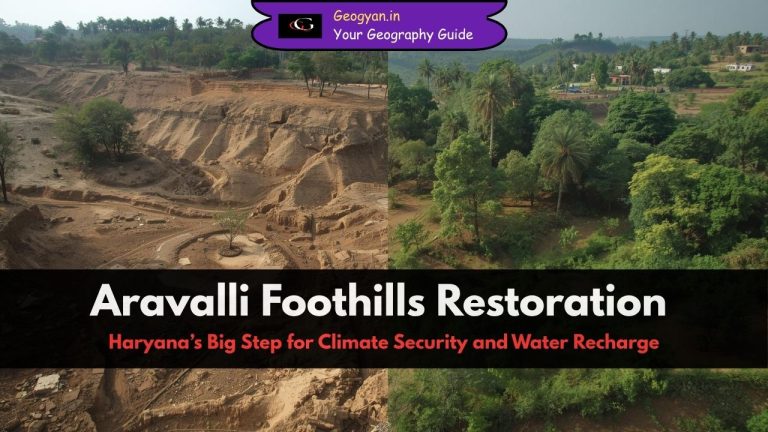Estimated reading time: 7 minutes
Table of contents
Remote sensing is a powerful tool used in many fields, offering significant benefits and some challenges. Understanding the advantages and limitations of remote sensing is crucial to utilize it more effectively. In this blog, we will explore both aspects, highlighting how remote sensing can benefit various industries and the constraints to consider when using it.
Advantages of Remote Sensing
Remote sensing provides several unique advantages that make it a preferred choice in numerous scientific, environmental, and commercial applications.
1.Non-Intrusive Data Collection
One of the key advantages of remote sensing is its non-intrusive nature. Passive sensors record the electromagnetic energy reflected or emitted by objects without disturbing them. For instance, passive remote sensing uses natural energy sources like the sun, making it ideal for monitoring ecosystems or geological features without interference.
2.Systematic Data Collection
Remote sensing systems are designed to collect data systematically, reducing the risk of human bias. This feature sets it apart from traditional in situ investigations, where manual data collection could introduce inconsistencies. The consistent, automated nature of remote sensing allows for more reliable data collection over time.
3.Synoptic View of Large Areas
A significant advantage of remote sensing is its ability to provide a synoptic view, meaning it can capture large geographic areas at once. This capacity greatly reduces data acquisition time and cost compared to traditional surveying methods, which require more manual labor and time.
4.Regular Monitoring
Remote sensing from satellites can be done repeatedly at set intervals, making it perfect for continuous monitoring. Whether it’s tracking deforestation, urban expansion, or glacial retreat, remote sensing provides consistent, updated information over time.
5.Access to Inaccessible Areas
Remote sensing can gather data from locations that are physically difficult or politically restricted to access. Whether it’s monitoring the polar ice caps or politically sensitive regions, remote sensing enables us to overcome geographic or political barriers.
6.Fundamental Biophysical Data
Under controlled conditions, remote sensing provides essential biophysical data such as geographic coordinates, elevation, biomass, temperature, and moisture content. This information is valuable in fields like agriculture, forestry, and urban planning, where spatial data is critical.
7.Data for Scientific and Environmental Studies
Unlike traditional mapping sciences like GIS or cartography, remote sensing produces its own scientific data. For instance, thermal infrared remote sensing systems can generate geometrically accurate maps of land or sea-surface temperatures, which are critical for environmental monitoring.
Limitations of Remote Sensing
While there are many advantages of remote sensing, it is important to acknowledge its limitations to avoid unrealistic expectations.
1.Overestimated Capabilities
One of the biggest limitations of remote sensing is the overestimation of its capabilities. Remote sensing is not a universal solution for all scientific inquiries. It only provides spatial, spectral, and temporal information, which may need to be supplemented by other methods for comprehensive data analysis.
2.Human-Induced Errors
Human intervention in the remote sensing process can introduce errors. From choosing the sensor type to determining the resolution and calibration, human decisions can affect the quality of the data collected. This limitation emphasizes the importance of proper planning and execution to minimize errors.
3.Intrusiveness of Active Sensors
Unlike passive sensors, active remote sensors, such as lasers and radars, emit their own electromagnetic radiation (EMR). This process can interfere with the object or area being studied, potentially skewing the results.
4.Uncalibrated Instruments
Another significant limitation of remote sensing is the risk of using uncalibrated instruments. Over time, remote sensing instruments may lose their calibration, leading to inaccurate data collection. Calibration issues require regular maintenance and technical expertise, which may increase operational costs.
5.High Costs
While the benefits of remote sensing are immense, the cost can be a barrier for some users. Collecting, interpreting, and analyzing remote sensor data can be expensive. Despite this, the value derived from the insights provided often justifies the cost, particularly in high-stakes applications like disaster management or climate monitoring.
Conclusion
Understanding both the advantages and limitations of remote sensing is vital for making informed decisions about its use in various fields. While it offers unparalleled capabilities in terms of non-intrusive data collection, systematic monitoring, and accessing hard-to-reach areas, it also comes with challenges like high costs, the potential for human-induced errors, and technical limitations.
By carefully weighing these pros and cons, remote sensing can be effectively integrated into scientific research, environmental conservation, urban planning, and many other critical applications.
Test Your Knowledge with MCQs
1. Which of the following are advantages of remote sensing?
A. Remote sensing is non-intrusive when using passive sensors.
B. It can only be used for collecting data in accessible areas.
C. It provides a synoptic view, allowing data collection over large areas.
D. Data from remote sensing is always free to access.
2. Match the following advantages with their descriptions
1. Synoptic View
2. Non-Intrusive Data Collection
3. Regular Monitoring
4. Access to Inaccessible Areas
a. Enables collection of data from politically restricted or remote areas.
b. Allows for continuous monitoring of earth-surface features at regular intervals.
c. Captures large geographic areas simultaneously.
d. Records data without interfering with the phenomenon of interest.
3. Which of the following is a limitation of remote sensing?
A. Data collection is always error-free.
B. It is not suitable for inaccessible areas.
C. Active sensors can sometimes be intrusive.
D. Remote sensing is completely free of human error.
4. Assertion (A): Remote sensing can be used to collect data from large geographic areas in a short amount of time.
Reason (R): Remote sensing provides a synoptic view, enabling coverage of vast regions.
A. Both A and R are true, and R is the correct explanation of A.
B. Both A and R are true, but R is not the correct explanation of A.
C. A is true, but R is false.
D. Both A and R are false.
5. Which of the following factors can introduce human-induced error in remote sensing
A. Sensor calibration
B. Data processing decisions
C. Choice of platform for sensor placement
D. Natural radiation from the sun
6. Match the following limitations with their descriptions.
1. High Cost
2. Uncalibrated Instruments
3. Intrusiveness of Active Sensors
4. Overestimation of Capabilities
a. Instruments emitting electromagnetic radiation may affect the phenomenon being observed.
b. Data collection is expensive but provides valuable information.
c. Equipment may lose calibration over time, leading to inaccurate results.
d. Remote sensing cannot solve all scientific inquiries despite its wide application.
7. Assertion (A): Remote sensing is always accurate and free of errors.
Reason (R): Human decisions regarding sensor selection and data processing can introduce inaccuracies.
A. Both A and R are true, and R is the correct explanation of A.
B. Both A and R are true, but R is not the correct explanation of A.
C. A is false, but R is true.
D. Both A and R are false.
8. Which of the following statements is true about passive remote sensing?
A. It relies on artificial sources of energy.
B. It uses natural sources of energy like sunlight.
C. It can interfere with the object being studied.
D. It is more expensive than active remote sensing.
9. Which of the following are common applications of remote sensing?
A. Monitoring deforestation
B. Surveying single points in small areas
C. Tracking urban expansion
D. Gathering political information
10. What is the primary purpose of systematic data collection in remote sensing?
A. To collect data from only specific locations.
B. To eliminate human bias in data collection.
C. To increase the cost of data collection.
D. To reduce the resolution of the data collected.
Answers:
1. A – True, B – False, C – True, D – False
2. 1-c, 2-d, 3-b, 4-a
3. C
4. A
5. A – True, B – True, C – True, D – False
6. 1-b, 2-c, 3-a, 4-d
7. C
8. B
9. A – True, B – False, C – True, D – False
10. B
FAQs
Remote sensing offers several advantages, including non-intrusive data collection, systematic and large-scale coverage, regular monitoring capabilities, and access to inaccessible areas. It provides valuable data for various applications, such as environmental monitoring, disaster management, urban planning, and agriculture.
Remote sensing has limitations, including potential overestimation of capabilities, human-induced errors, the intrusiveness of active sensors, the need for instrument calibration, and high costs associated with data collection and analysis.
The future of remote sensing is promising, with advancements in sensor technology, data processing, and artificial intelligence. These developments will lead to improved accuracy, efficiency, and accessibility of remote sensing data, expanding its applications in various fields and contributing to a better understanding of our planet.





























